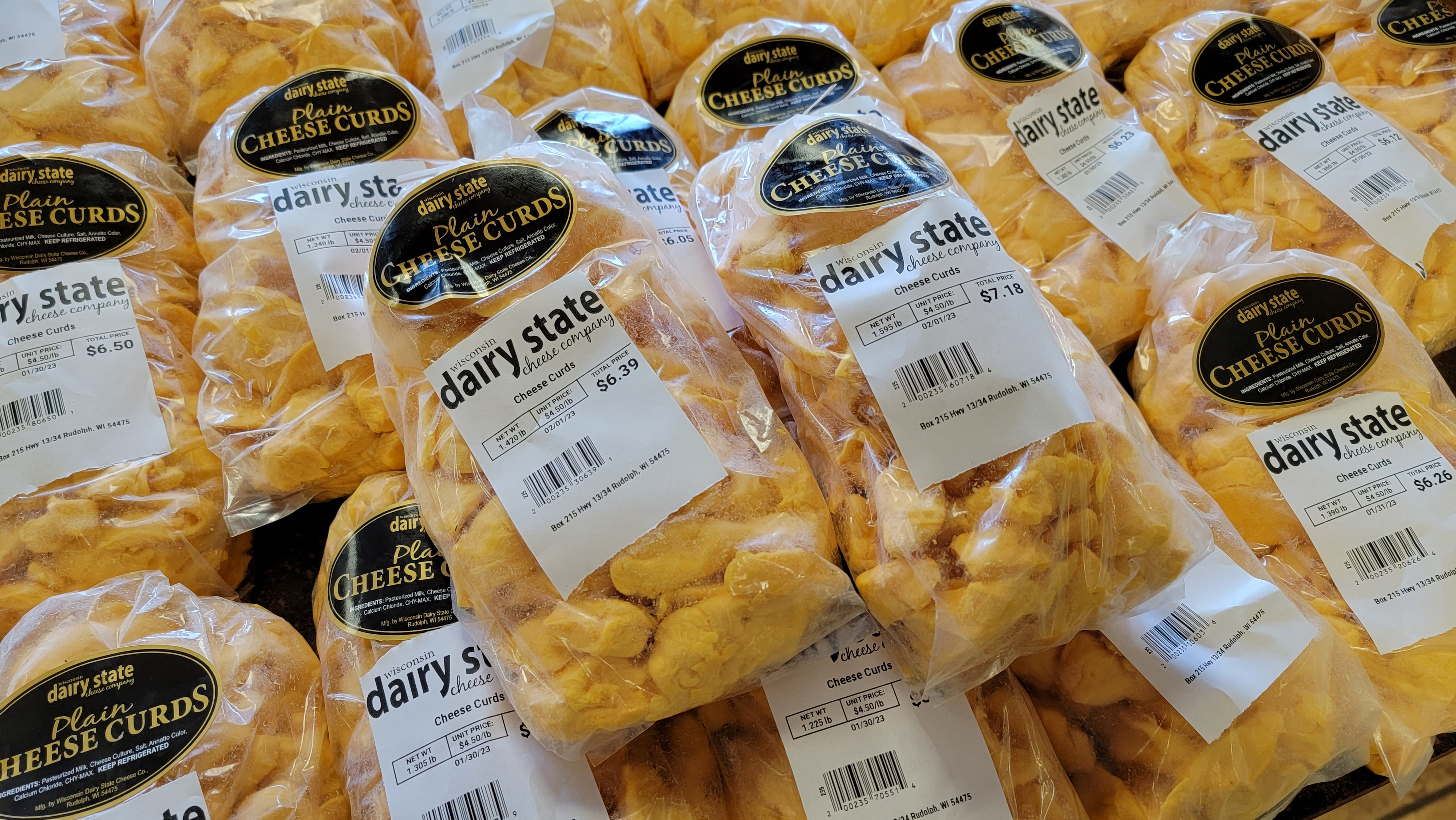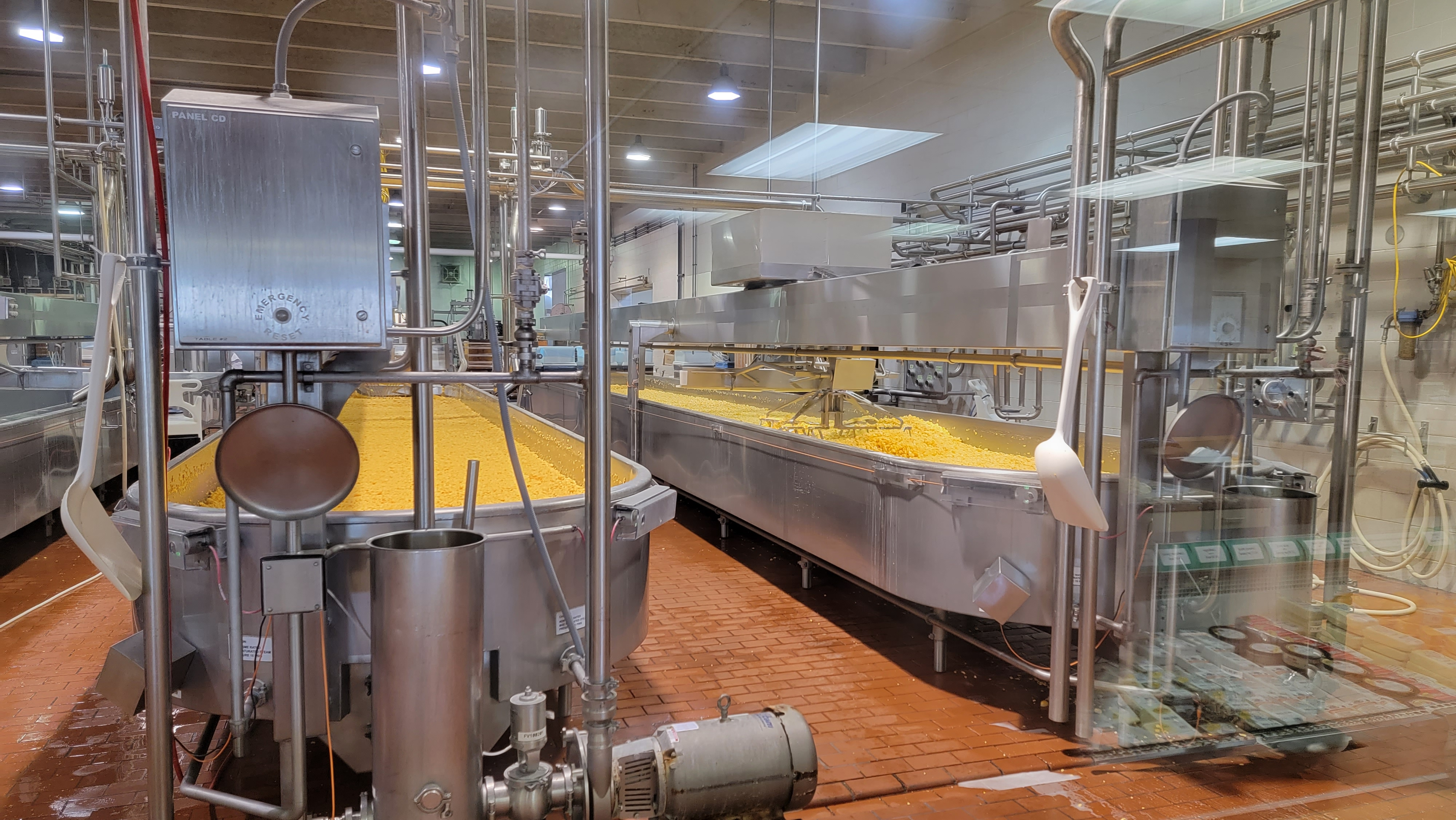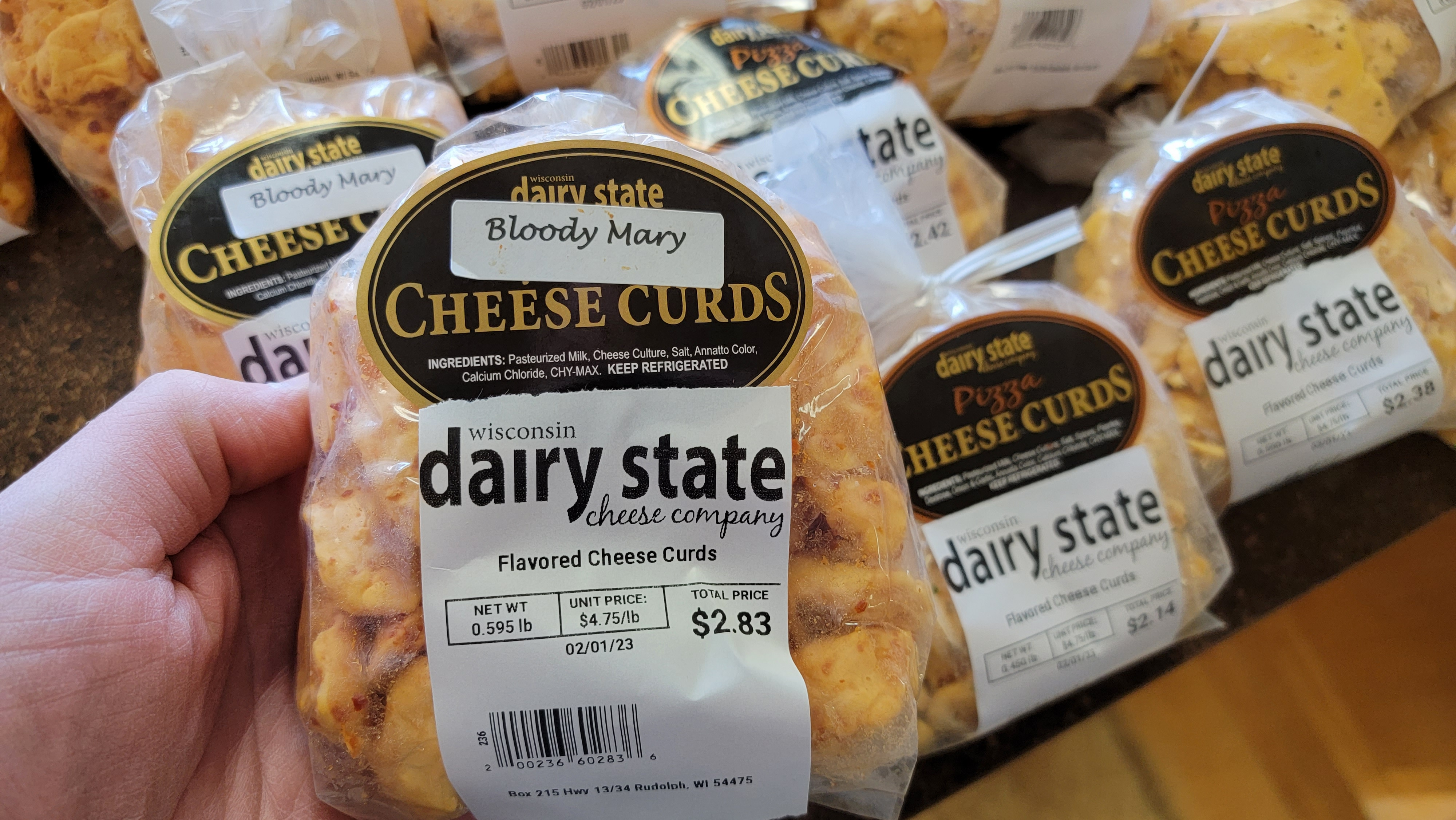The Secrets Of How Cheese Curds Are Made
The hands-on process is more complicated than you’d expect from such a simple treat.
The universe can be a wonderful place, and cheese curds are here to prove it. Whether deep fried, covered in gravy, or skewered and stirred in a Bloody Mary, these delectable snacks are a hallmark of dairy-based comfort food. It's hard to beat a fresh curd, still warm and straight from the source.
But have you ever halted halfway through your third bag, looked down at the curd in your hand, and wondered, "How did such a blessing come to be?" I have, and I've eaten enough of the darn things to fill the scoop of an end loader. After a bit of research and a trip to the local cheese factory, I've come away with some answers.

Cheese curds start with milk
In many cheese factories, the process begins by heating an open vat of fresh, pasteurized milk. Bacterial starter cultures are then added, along with a natural coagulant called rennet. This microbial compound can be derived in multiple ways (not all of them terribly appetizing), but most US-based cheesemakers use a fermenter-grown version derived from bacteria.
At this point, the mixture is agitated and heated. Curds start to form as the bacteria get busy, separating the fledgling cheese from the liquid whey. After a few hours (and once the chunks begin to firm), it's time to drain the vats and start pressing the remaining moisture from the curds. Workers use large rakes or shovels to push the cheese against the sides of the vessel, allowing the liquid to run off.
Cheese curds are a manual labor of love
Here we get to the hands-on part, known as The Cheddaring. No, this isn't the name of a dairy-themed horror film (although I'd totally watch that). It refers to the process of dividing and pressing the accumulated solids into small pieces, which gives rise to a bunch of fun phrases.
First, the cheese harp. This is the instrument used to cut the curds, after which they're pressed together to form a slab, or cheese mat. These are then stacked atop one another, to help drive out additional moisture. After repeating the process a few times, the mats are run through a curd mill, which is much more fun than running through a paper mill. Trust me, I've done both.
After going through the cutter, the curds are now more or less bite-size. They're given a quick wash,then workers sprinkle the fragments with salt, which helps maintain pH and flavor.
What happens to the removed liquids? They're consumed, one way or another. The separated cream can be used to make butter, and the whey can be processed and sold as "Whey Protein," like the big, powdery bags at my local cheese factory.
Speaking of which, if you'd like to see some of the process in action, check out this one-minute video from the same location (not filmed by me), featuring a worker just trying to go about his day. I feel you, brother.
How cheese curds are colored and flavored
White cheese curds vs. orange ones: Do they taste different? No, not really. Though the color of milk can vary with the diet of the sourced cows, the difference is fairly subtle, and the cheesemaking process is consistent. In fact, that golden orange hue we associate with cheddar comes from the addition of annatto seed extract. This plant-derived substance is generally flavorless, at least in its additive form.
It's the same story with those tasty bricks of cheddar. The yellow ones have annatto, and so-called white cheddar doesn't. Other than that, the cheddars are the same. Annatto is also a prime ingredient in bright, flavorful recardo rojo, or achiote paste. If you haven't tried it in homemade Mexican cuisine, I'd highly recommend it.
As for special varieties of curds you might find, such as dill, or jalapeno, or even pizza, those flavors are added between the time the finished curds leave the vat and before they're stuffed into bags, still deliciously steamy and warm.
To curd, or not to curd?
In case you were wondering, yes, you can make your own curds in your kitchen. But are you sure you want to? Normally this is where I'd say something like, "It's easier than you'd think!" But it's not.
Chef John, the patron saint of YouTube cookery, has this video on his Food Wishes channel to walk you through the entire process. It involves precise temperatures, multiple pots, and lots of stirring, pressing, and waiting.
I'm generally an advocate for preparing foods at home. But after wheying (sorry) the pros and cons, I think I'll stick to the cheese factory. For what it's worth, Chef John agrees. If you're craving that fresh cheese curd squeak (Why do they do that, anyway?), the entire process might be best left to the professionals.


